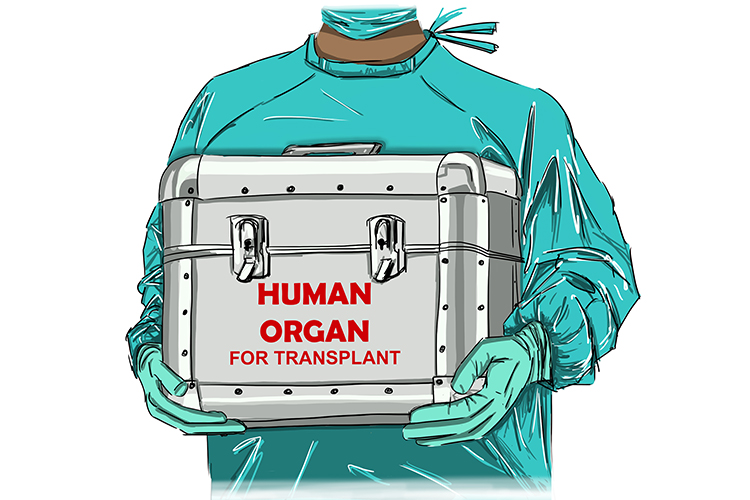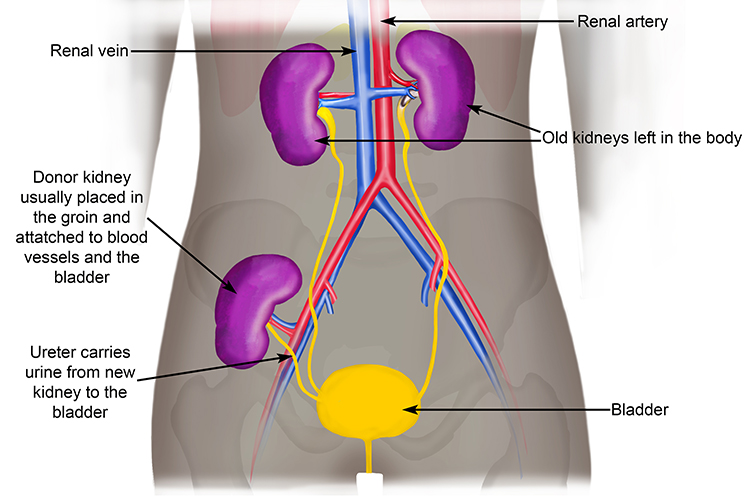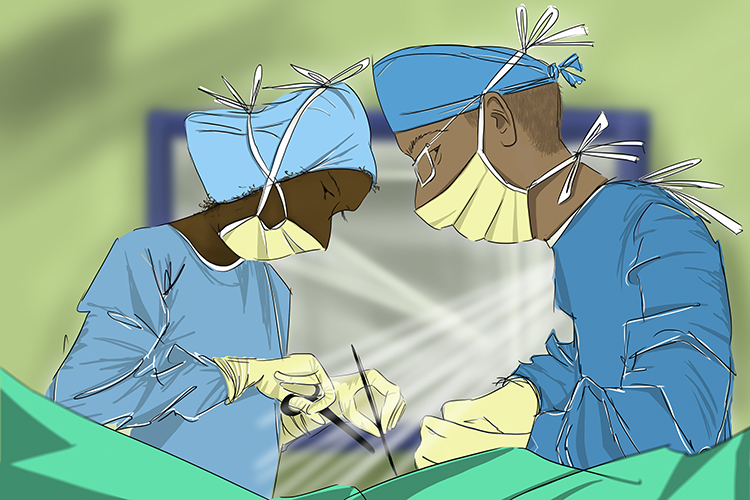Kidney transplants – moving a kidney from one person’s body to another.
A transplant is the ultimate treatment for patients with diseased or damaged kidneys. A successful kidney transplant means the patient is free from dialysis procedures.

The surgeon attaches the transplant kidney close to the patient’s bladder, which means the new ureter – the tube from the kidney to the bladder – can be kept relatively short, avoiding complications when implanting it.

Rejection – When the immune system attacks a transplanted kidney because it thinks it’s an invader.
The body’s immune system naturally treats any new organic material implanted into it as alien, and attacks it. This is called rejection.
To prevent rejection of the new kidney, the patient’s bone marrow is treated with radiation to stop production of white blood cells. Drugs are also used to suppress the immune system.
Sometimes, a close (“blood”) relative donates a kidney to a patient. This has the advantage that the tissue type will be similar to the patient’s, reducing the chances of rejection.
Disadvantages of kidney transplants
1. Surgical risks
The risks of the surgery include infection, bleeding and damage to the surrounding organs.

2. Risk of rejection
See “rejection” above.
3. Transplanted kidneys don’t work forever
Transplanted kidneys don’t carry on working forever. The average is 12 years for a kidney from a deceased donor, and about 15 years for a kidney from a living close relative. The average for a transplant from a living, unrelated person is somewhere between the two.




